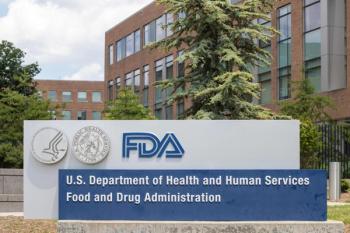
Evolving Health Policies Pose Financial Challenges—and New Opportunities—for Hospital Pharmacists
Recent changes in health care policy and regulation are reshaping the landscape for pharmacists in hospital and health system settings, presenting significant challenges and promising opportunities. In this interview at ASHP Pharmacy Futures 2025, Tom Kraus, MHS, highlights how the implementation of the Inflation Reduction Act’s Medicare drug price negotiation program has introduced complexities that could inadvertently burden health systems with higher up-front drug costs due to the use of rebates instead of direct discounts. He also raises concerns about similar trends affecting the 340B Drug Pricing Program, which has historically been effective in lowering drug prices.
At the same time, Kraus points to a growing recognition of pharmacists as clinical care providers, with expanding reimbursement opportunities at the state level that could signal broader systemic change. This evolving policy environment underscores the need for thoughtful regulatory guidance to support cost-effective care and strengthen pharmacists' role in delivering it.
Q: How have recent changes in health care policy or regulation created new challenges or opportunities for pharmacists in hospital and health system settings?
Tom Kraus, MHS: So, one challenge that I see that's playing out right now relates to IRA [Inflation Reduction Act] drug price negotiation. This is the model of Medicare drug price negotiation that was rolled out under the Biden administration. This was one of their kind of signature initiatives, intending to reduce prices for Medicare drugs.
But the way that that program is playing out basically allows manufacturers flexibility in how they are going to give purchasers—pharmacies and hospitals—access to those discounts. Now, the way that we read the statute, it looks pretty clear to us that they are supposed to give that negotiated price to purchasers, to dispensers. But the way that the guidance has been written, it leaves flexibility for the manufacturers to provide those discounts as a rebate.
Now, that has a lot of implications with it, and we don't think that's ever what Congress intended, right? Congress was trying to force manufacturers to give a discount. What a rebate does is it allows manufacturers to sell at a high price. Now, as a purchaser, I have to outlay that higher level of cash. I have to carry inventory that I bought at that higher price, which means I have to come up with capital to do that. That costs money. And then I have to go chase down a rebate, so I have to wait until I get the rebate—and, by the way, maybe I don't actually succeed in getting some of those rebate dollars. For those, I don't get the discount at all.
And then I've got to navigate, you know, maybe up to 10 different rebate models this year. Maybe it'll be 15 next year and 20 in the fall. You could see how very quickly the costs really get out of control. The result is that health systems end up subsidizing this program that was intended to force manufacturers to reduce the cost of purchasing drugs. I don't think that's ever what Congress intended.
We really need CMS [the Centers for Medicare & Medicaid Services] to take another look at how that's implemented so that manufacturers provide that discount up front. If there were one kind of thing that's shifting in the landscape that I think CMS could actually intervene to fix, that would be a big one.
Another area where I think the government could engage in a productive way is what we're seeing on rebates on the 340B side. So, unrelated to IRA, but now you're also seeing manufacturers attempting to convert 340B up-front discounts—which have always been up-front discounts—and convert those to a rebate program.
Now, HRSA [the Health Resources and Services Administration], the agency that oversees that program, has said, “No, you can't do that. You have to get that approved by the government before you make that switch.” But in court cases, one of the things that the government said is, “Well, we're going to come up with some guidance for how to do that.” So, it seems pretty clear that there is going to be at least some mechanism—we don't know exactly what it will look like—for 340B covered entities to have that rebate model in 340B.
That creates a lot of those same cost downsides that I was describing in IRA. Now it sort of inserts those same problems into the 340B program. The thing that's so frustrating about this is that the 340B program is one of the only programs in the government that actually successfully extracts discounts from manufacturers. It's the one thing that actually works to get drug prices lower, and we're creating opportunities to mess with that and undermine that program, which supports access to services in so many health systems. So, I think that's really concerning.
Now, you also asked about opportunities. I think there are opportunities. One thing that the government could do to improve the concerns that we raised about IRA rebates is to just come out very clearly and say, “No, this really was intended to be an up-front discount.” This is the promise that we made to the American people—that we're going to bring down drug prices. Let's bring down those drug prices and actually force manufacturers to sell at that price, not play games with rebates and all this other stuff. So that's one thing.
I think there are opportunities around pharmacist payment that are really exciting. That's another area where government can weigh in and be helpful. I think it's so incredible that a default right now—and I think this is a change that's kind of shifted over the past 5 years, post-COVID or through COVID and beyond—is that policymakers, when I have a conversation with them, the default understanding is now that a pharmacist is a clinical care provider.
They know—maybe they don't know exactly the range of services that a pharmacist provides—but they at least understand from their own interactions that a pharmacist can provide testing services, they can provide vaccination, maybe even some level of prescribing of medications. That is a baseline understanding. That shift in mindset from policymakers is totally accelerating the pace at which we see reimbursement changes.
Just this year alone—just in 2025—in the first few months of 2025, 5 states have expanded pharmacist reimbursement. That's incredible. So, I think as we keep seeing that—and those changes are incremental and additive, right?—if every year we see 3 states, 5 states, that adds up really fast. That puts more and more pressure on the federal government to sort of equalize that coverage for Medicare beneficiaries. I think that will help us ultimately get to that goal of Medicare reimbursement for clinical services.
Newsletter
Stay informed on drug updates, treatment guidelines, and pharmacy practice trends—subscribe to Pharmacy Times for weekly clinical insights.


















































































































































































































